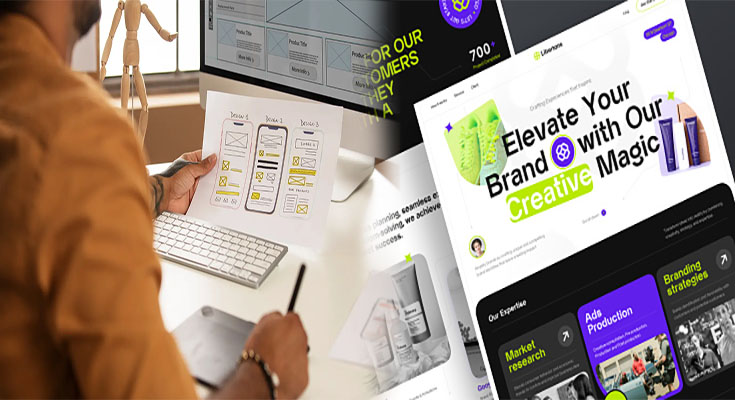Creating a user-friendly and engaging website is crucial for any creative agency looking to attract and retain clients. By incorporating best practices for user experience (UX) design, creative agencies can ensure that their website not only showcases their work effectively but also provides a seamless and enjoyable browsing experience for visitors. Here are some key best practices to consider when designing a creative agency website:
1. Clean and Intuitive Design
A clean and intuitive design is essential for a creative agency website. Use a visually appealing layout with easy navigation, clear information hierarchy, and a consistent design language that reflects the agency’s brand identity. Avoid clutter and unnecessary elements that could distract users from the main content.
2. High-Quality Visuals and Portfolio Showcase
Visual content is a key component of a creative agency website. Showcase high-quality images and videos of the agency’s work in a visually appealing portfolio section. Use filters or categories to help visitors easily explore different projects and find examples relevant to their needs.
3. Responsive Design
Ensure that your website is optimized for mobile devices and tablets. A responsive design guarantees a seamless user experience across various screen sizes and devices, allowing visitors to access your website effectively regardless of the device they are using.
4. Clear Calls-to-Action
Include clear calls-to-action (CTAs) throughout the website to guide visitors towards desired actions, such as contacting the agency, requesting a quote, or viewing the portfolio. Use contrasting colors, engaging copy, and strategically placed CTAs to grab users’ attention and encourage interaction.
5. Engaging Copy and Storytelling
Use compelling copywriting and storytelling to communicate the agency’s values, expertise, and unique selling points. Engage visitors with authentic and informative content that highlights the agency’s strengths and establishes a connection with potential clients.
6. Quick Load Times
Optimize the website for fast loading times to prevent users from abandoning the site due to slow performance. Compress images, minify code, and leverage caching techniques to ensure that pages load quickly and provide a seamless browsing experience.
7. User-Friendly Contact Forms
Make it easy for visitors to get in touch with the agency by including user-friendly contact forms with clear fields and instructions. Provide multiple contact options, such as email, phone, or a chatbot, to accommodate different preferences and streamline the communication process.
8. Testimonials and Client Feedback
Incorporate testimonials, client reviews, or case studies to build credibility and trust with potential clients. Highlighting positive feedback from satisfied clients can help establish the agency’s reputation and demonstrate the quality of its work to visitors.
By incorporating these best practices for user experience in the design of a creative agency website, agencies can create a compelling online presence that attracts clients, showcases their talent, and fosters meaningful connections with visitors. Prioritizing user experience ensures that the website not only looks appealing but also functions effectively, ultimately leading to a more successful online presence for the agency.
I have outlined the best practices for user experience in creative agency website design to help you enhance your website’s performance and engage visitors effectively. If you have any other questions or need further assistance, feel free to ask!





